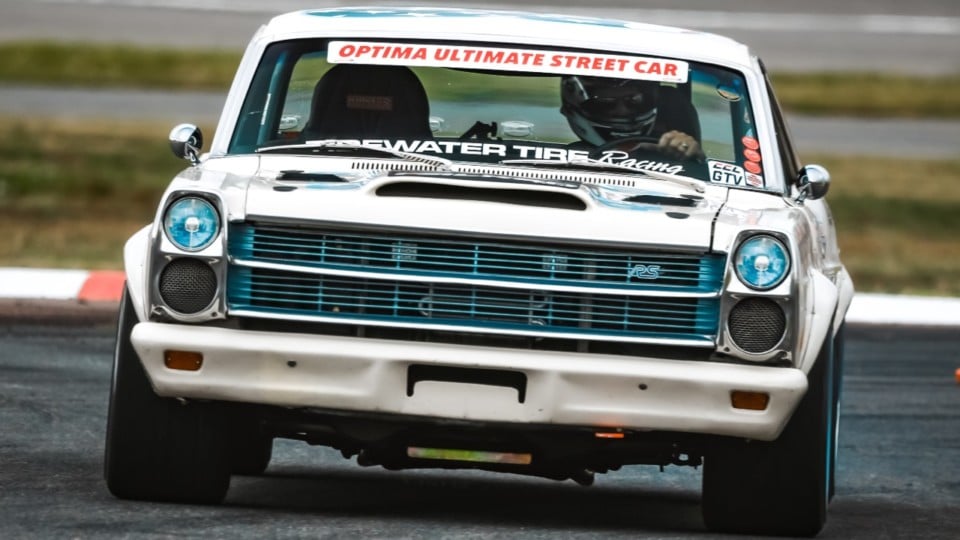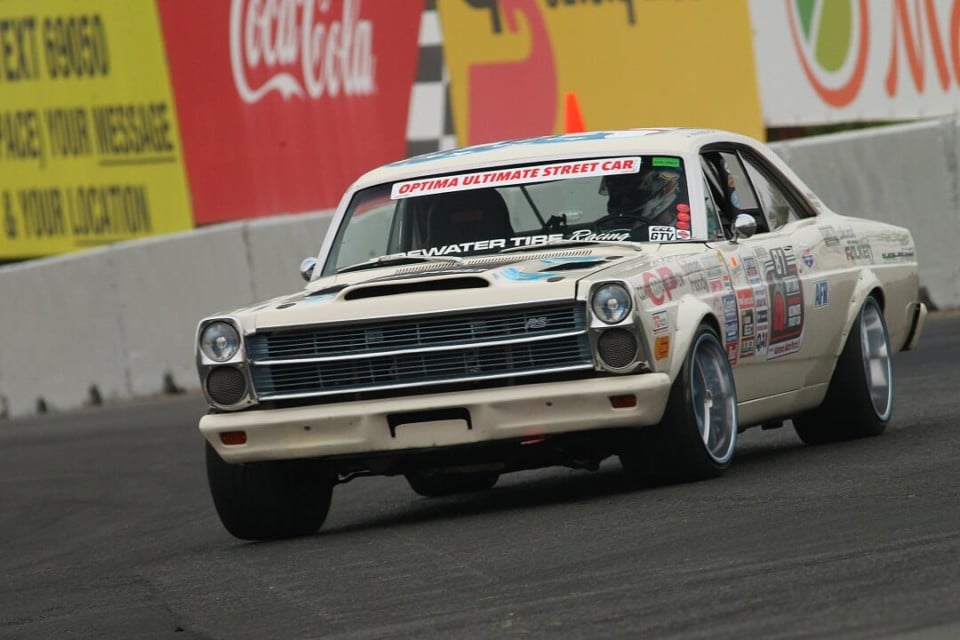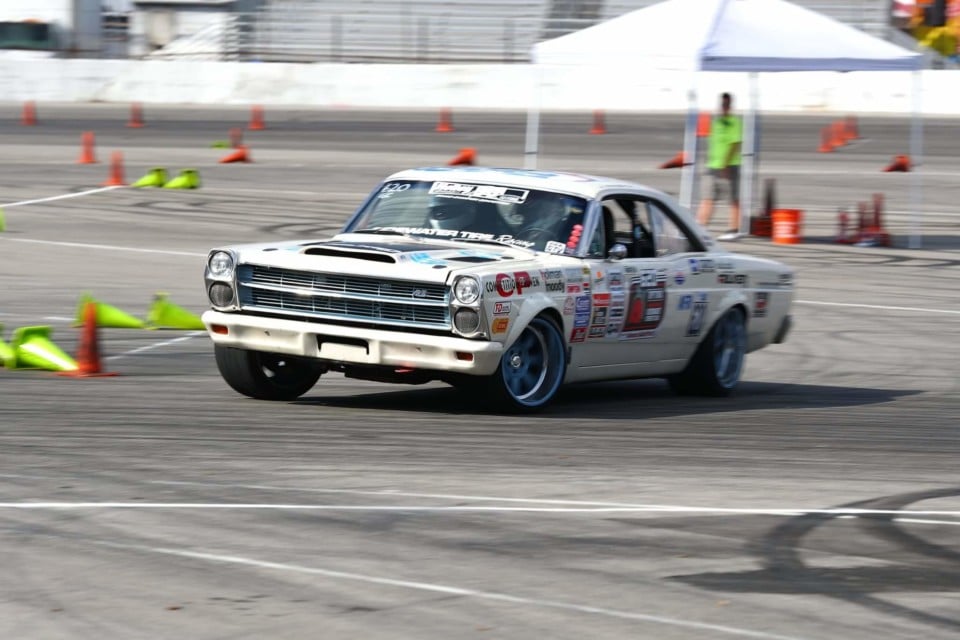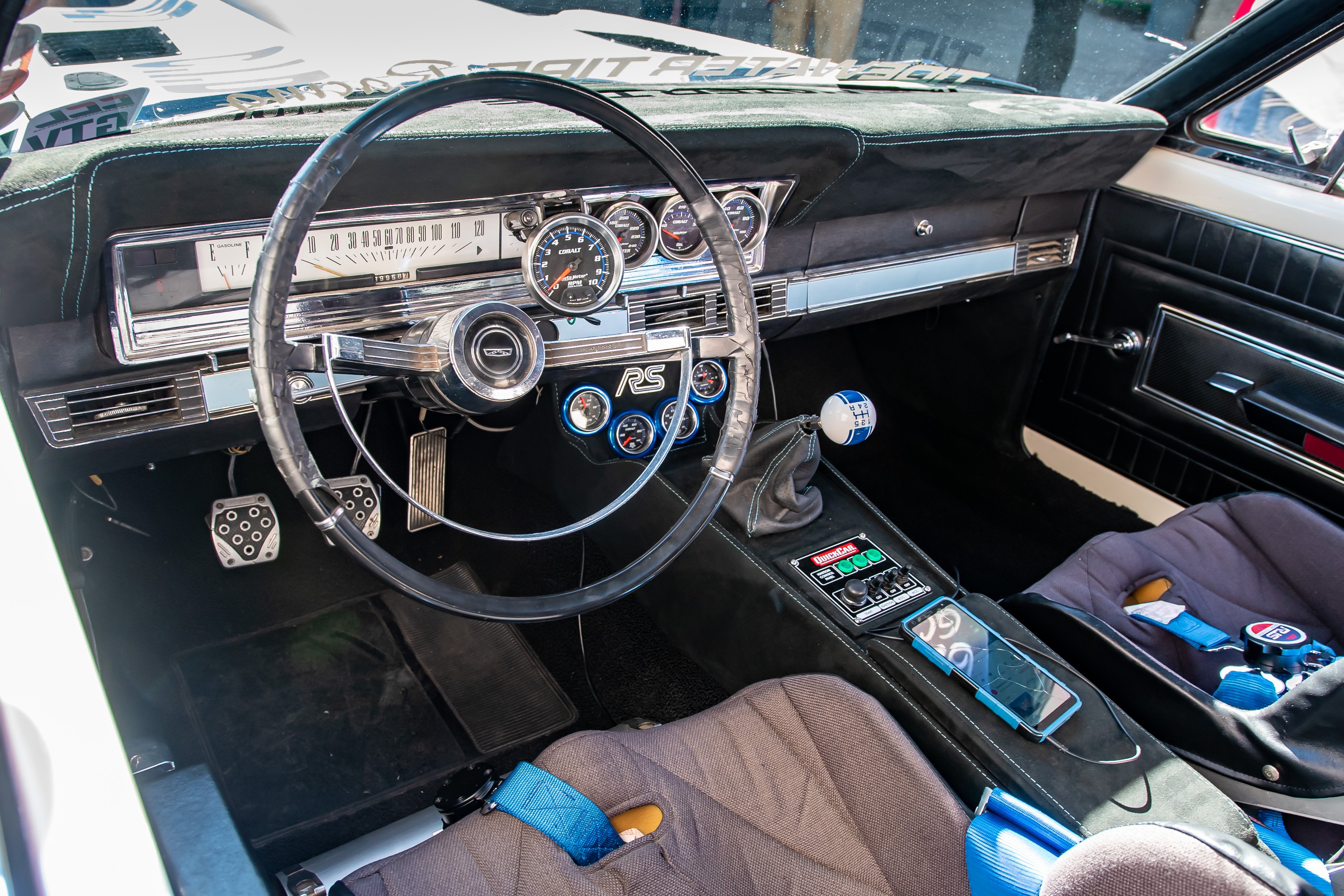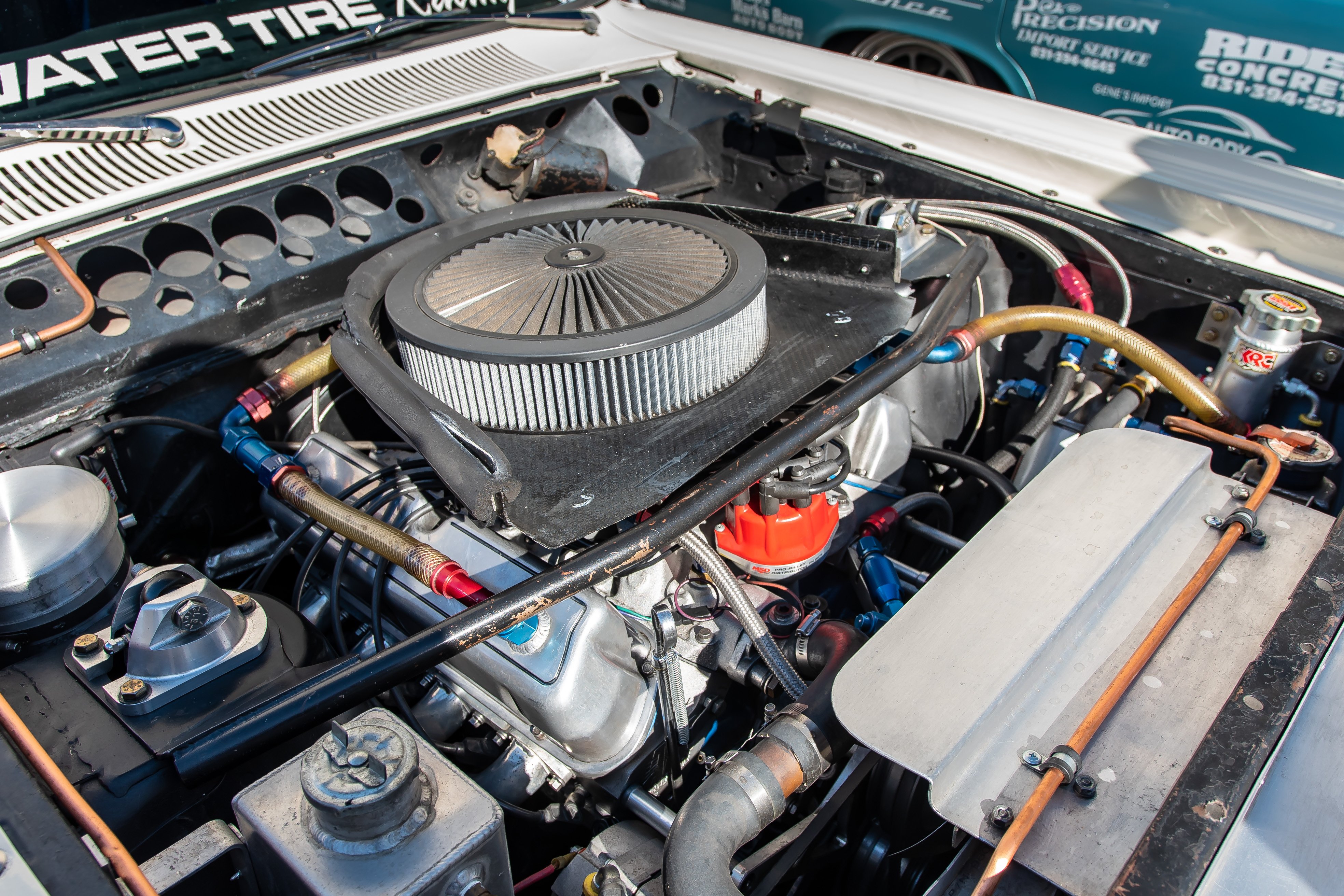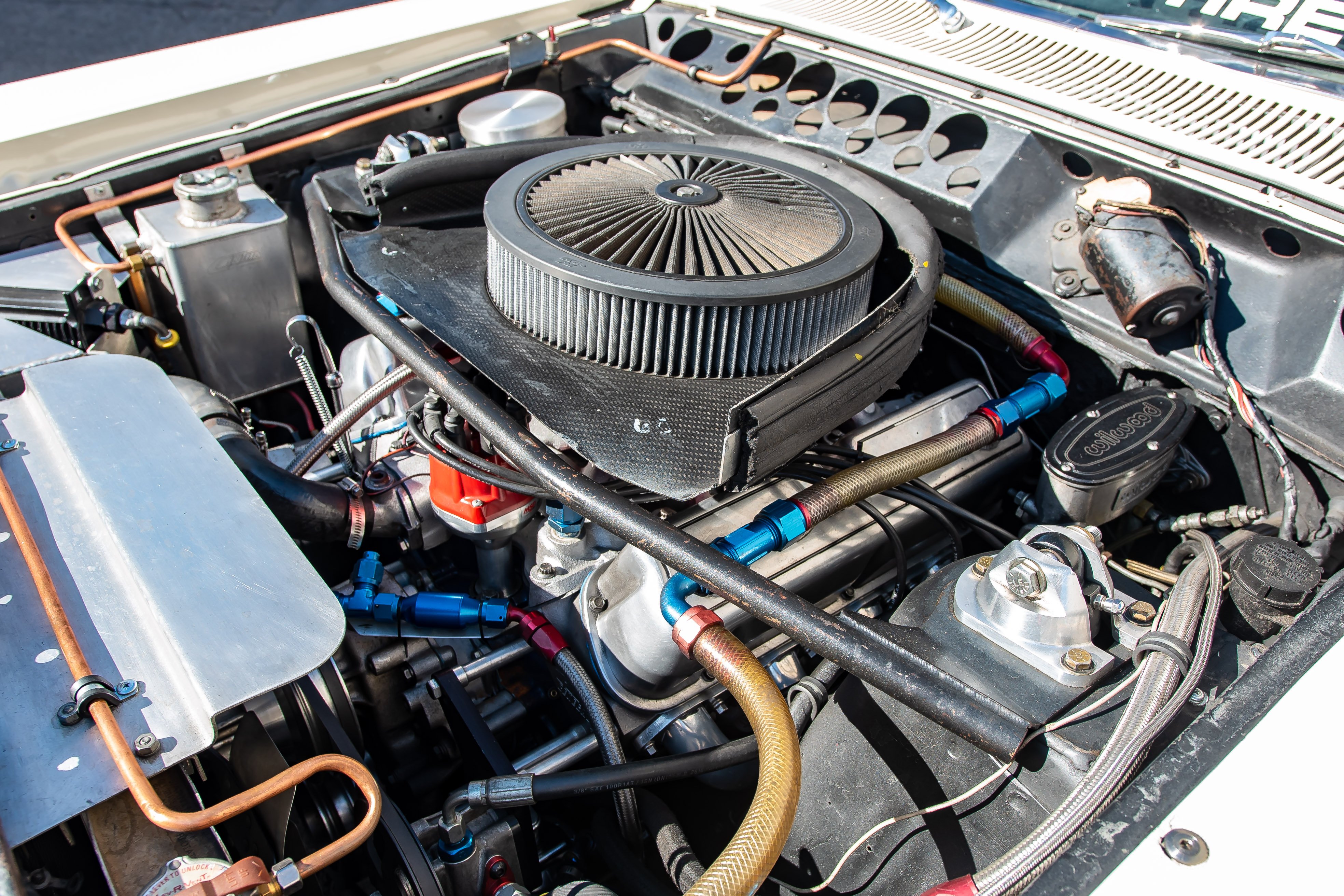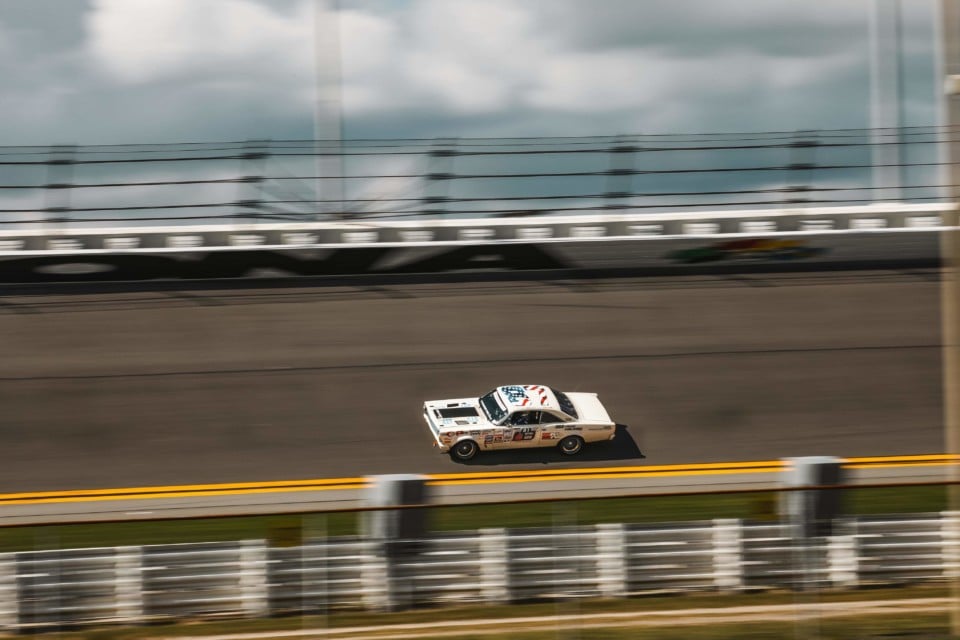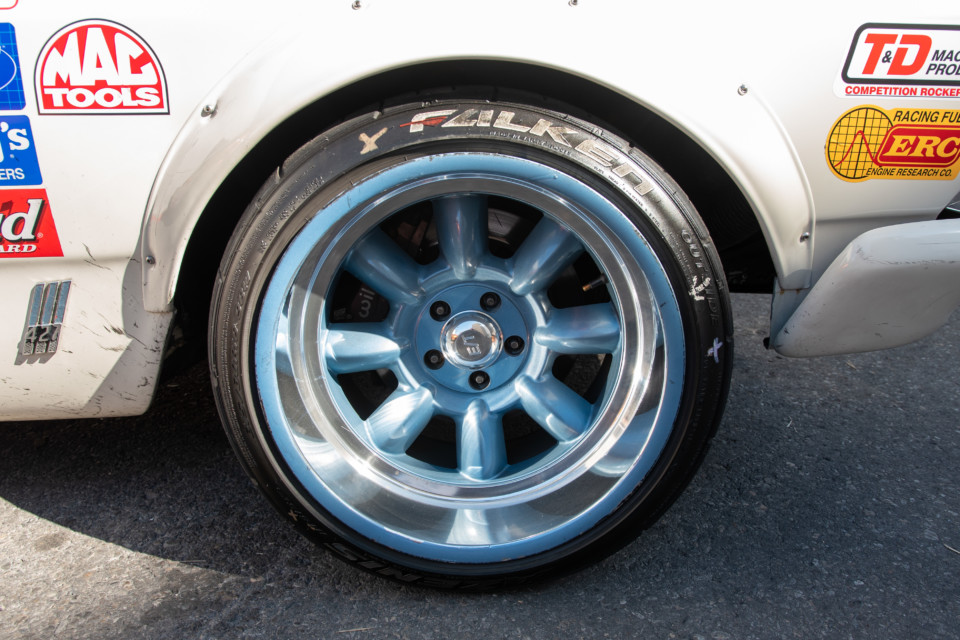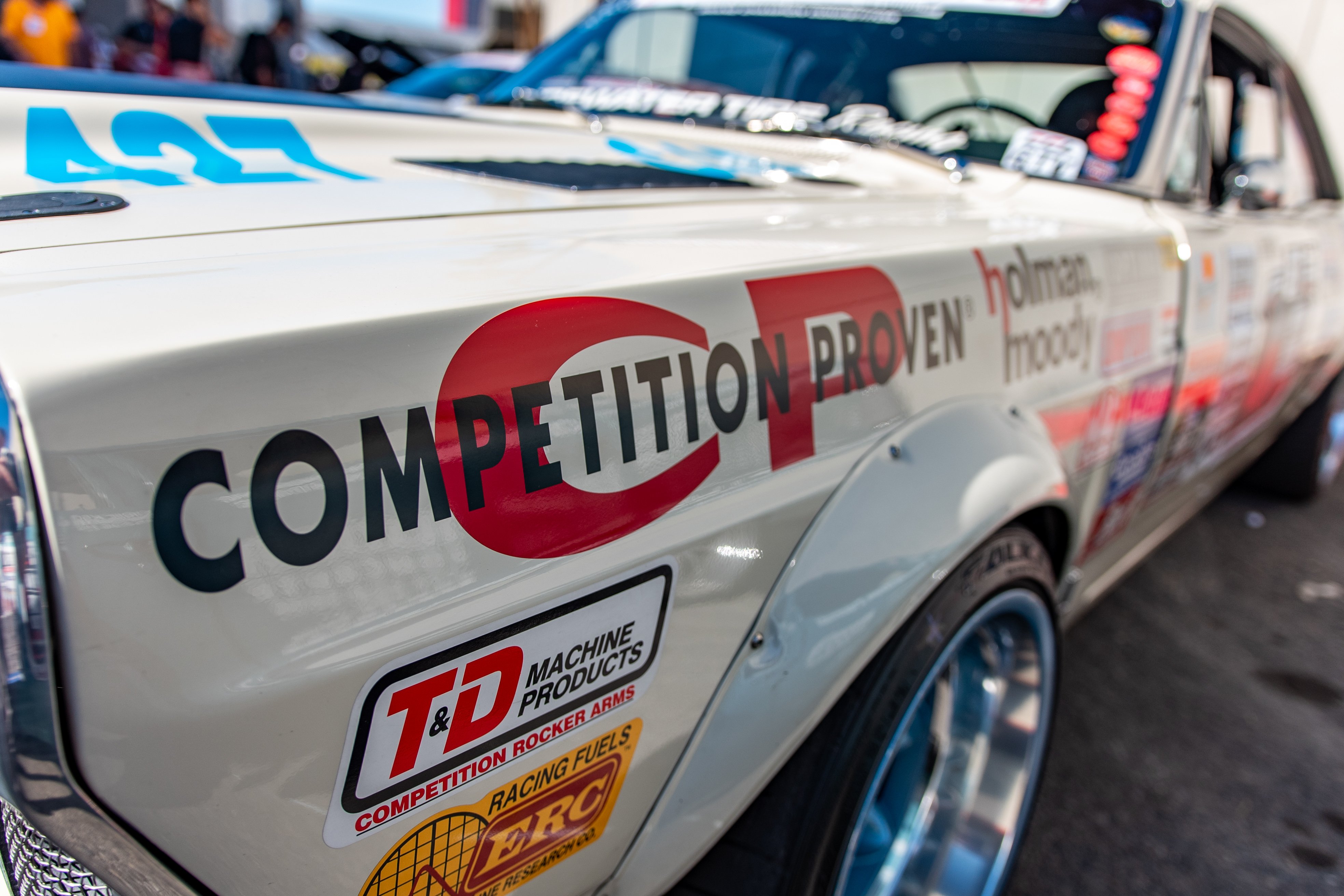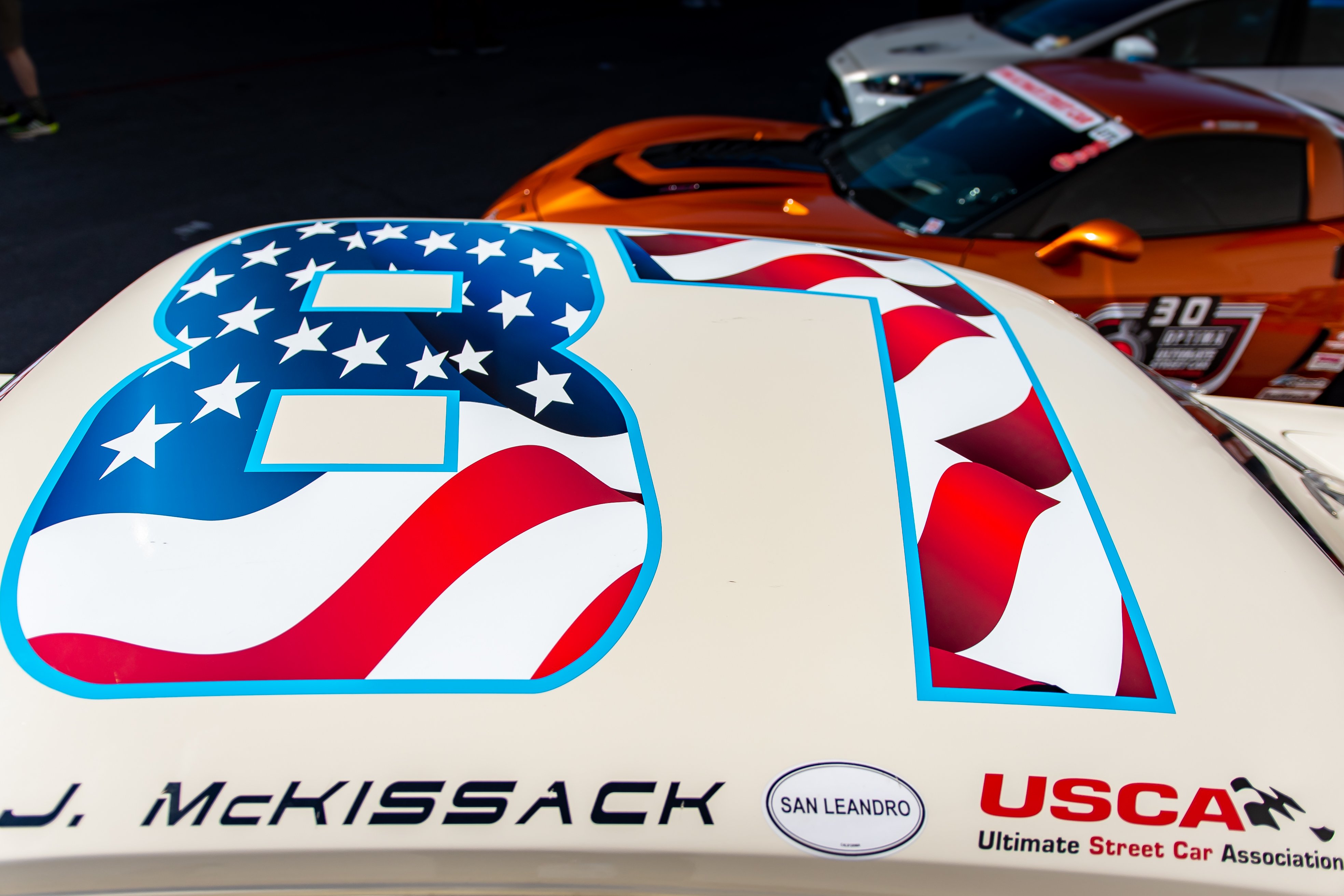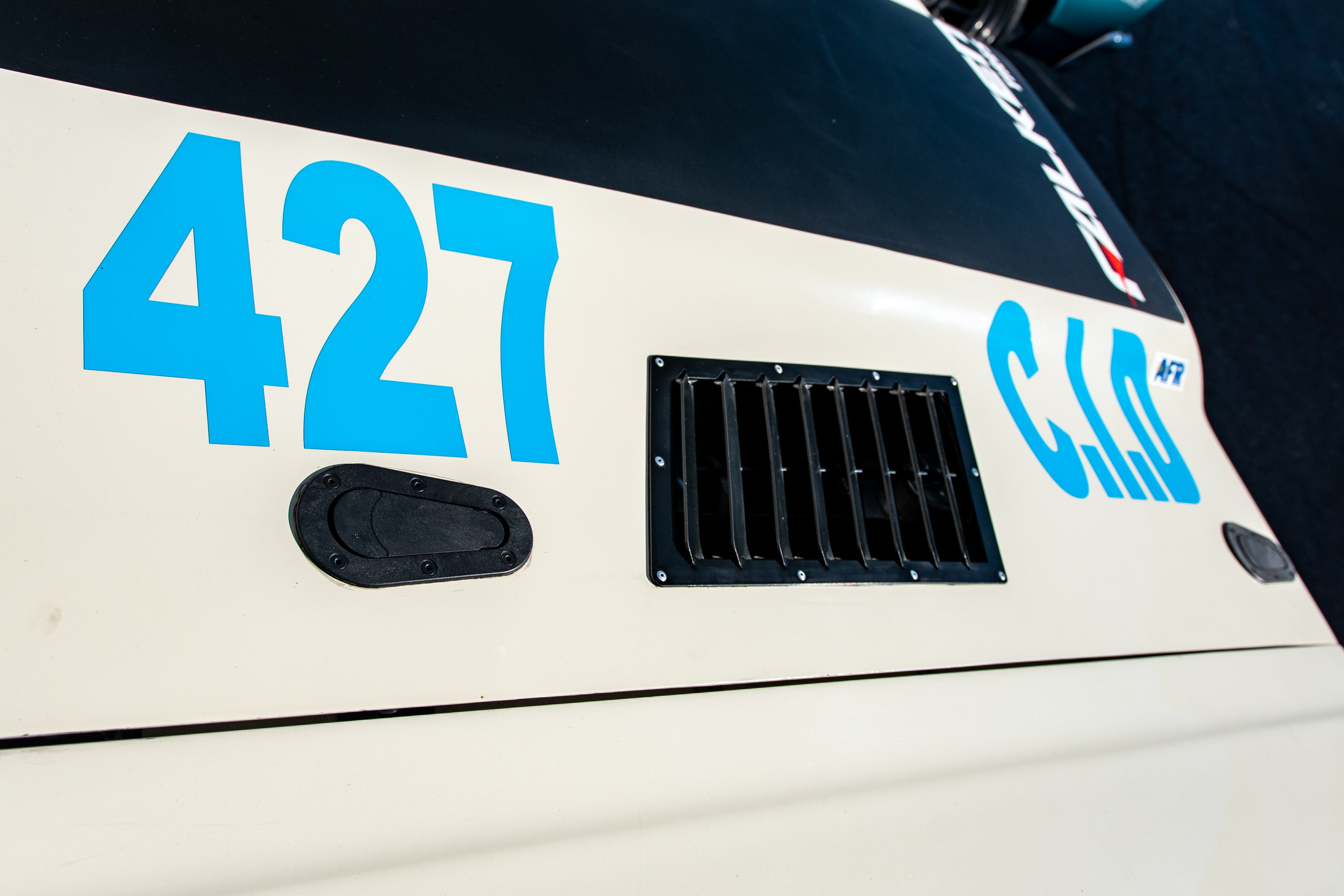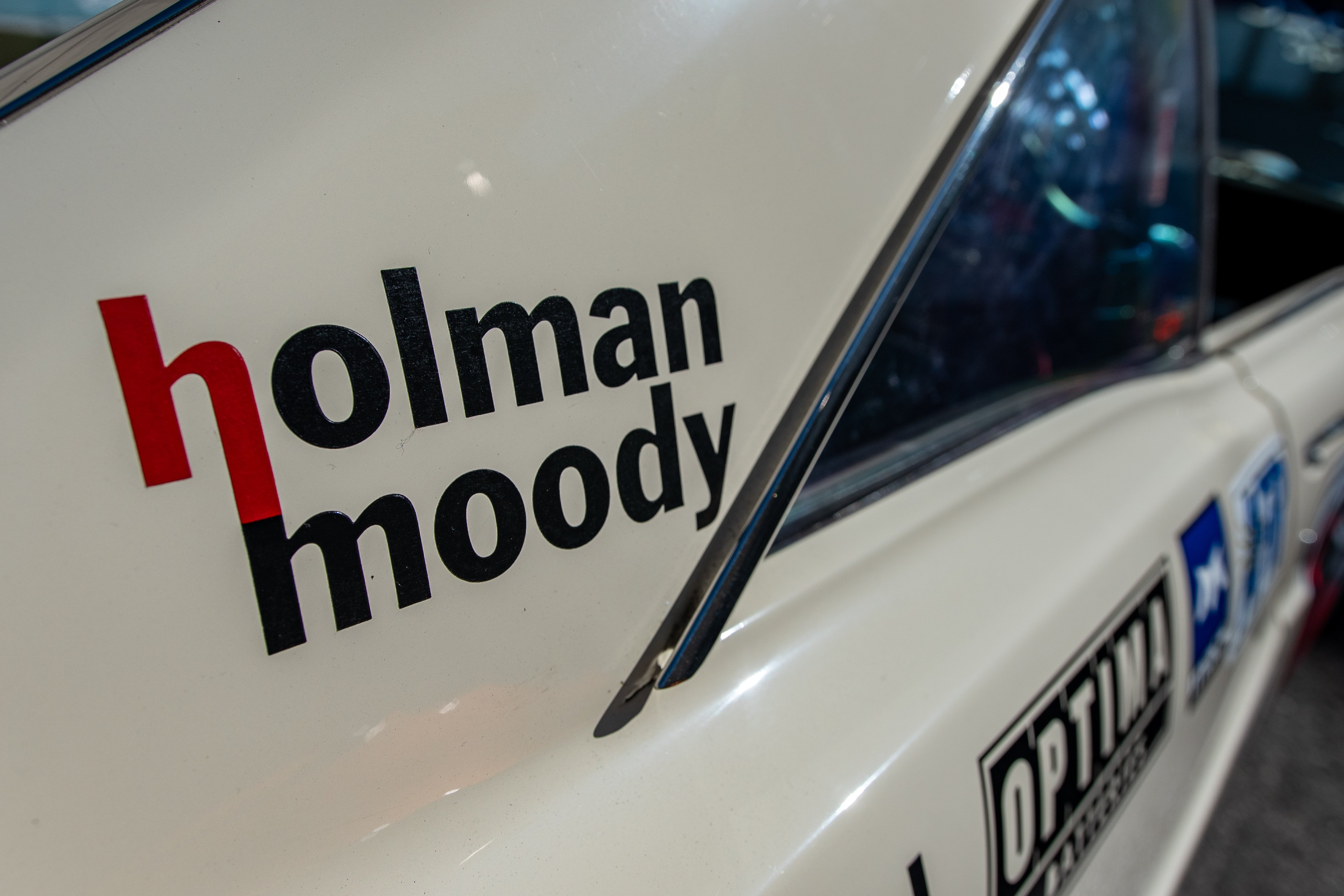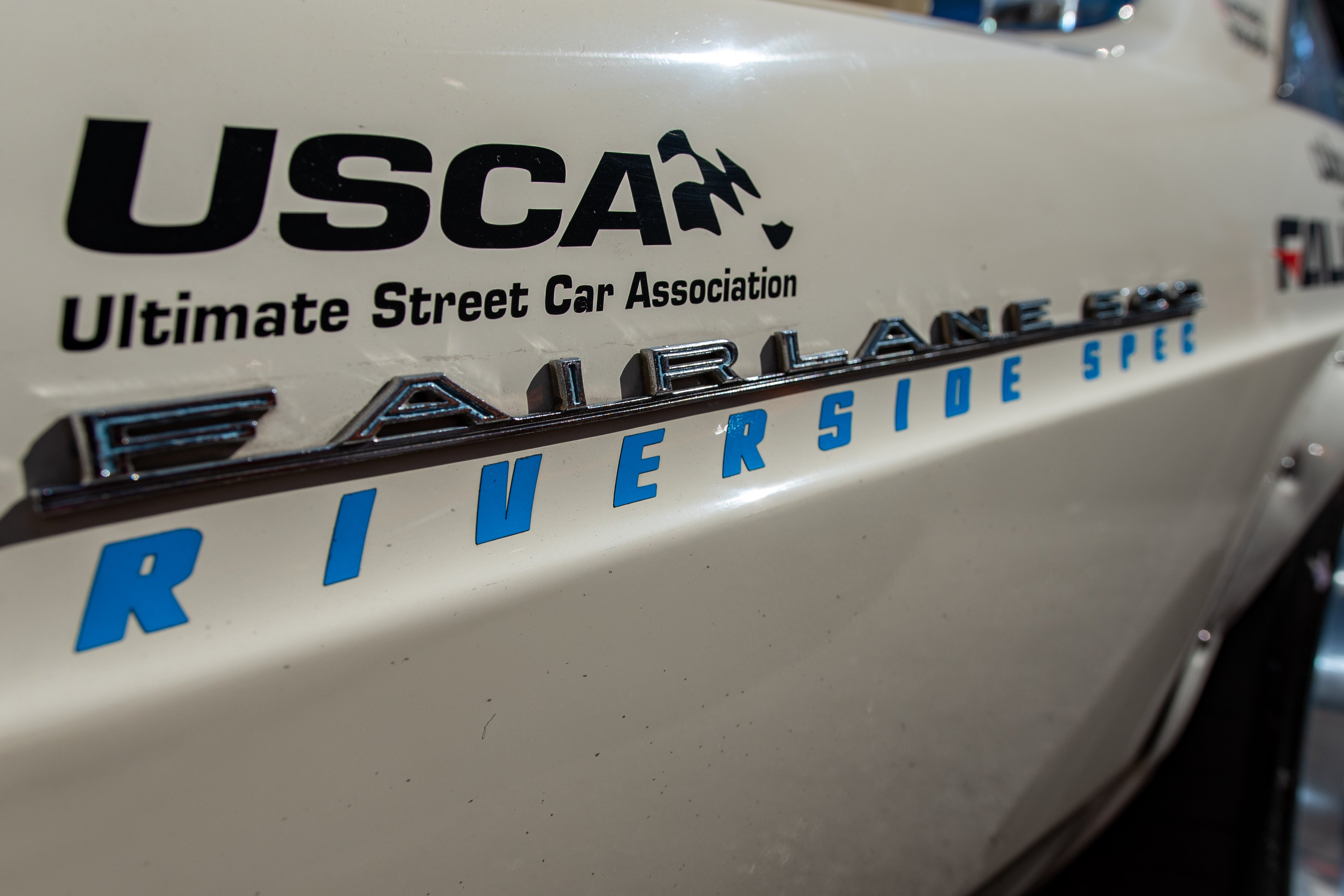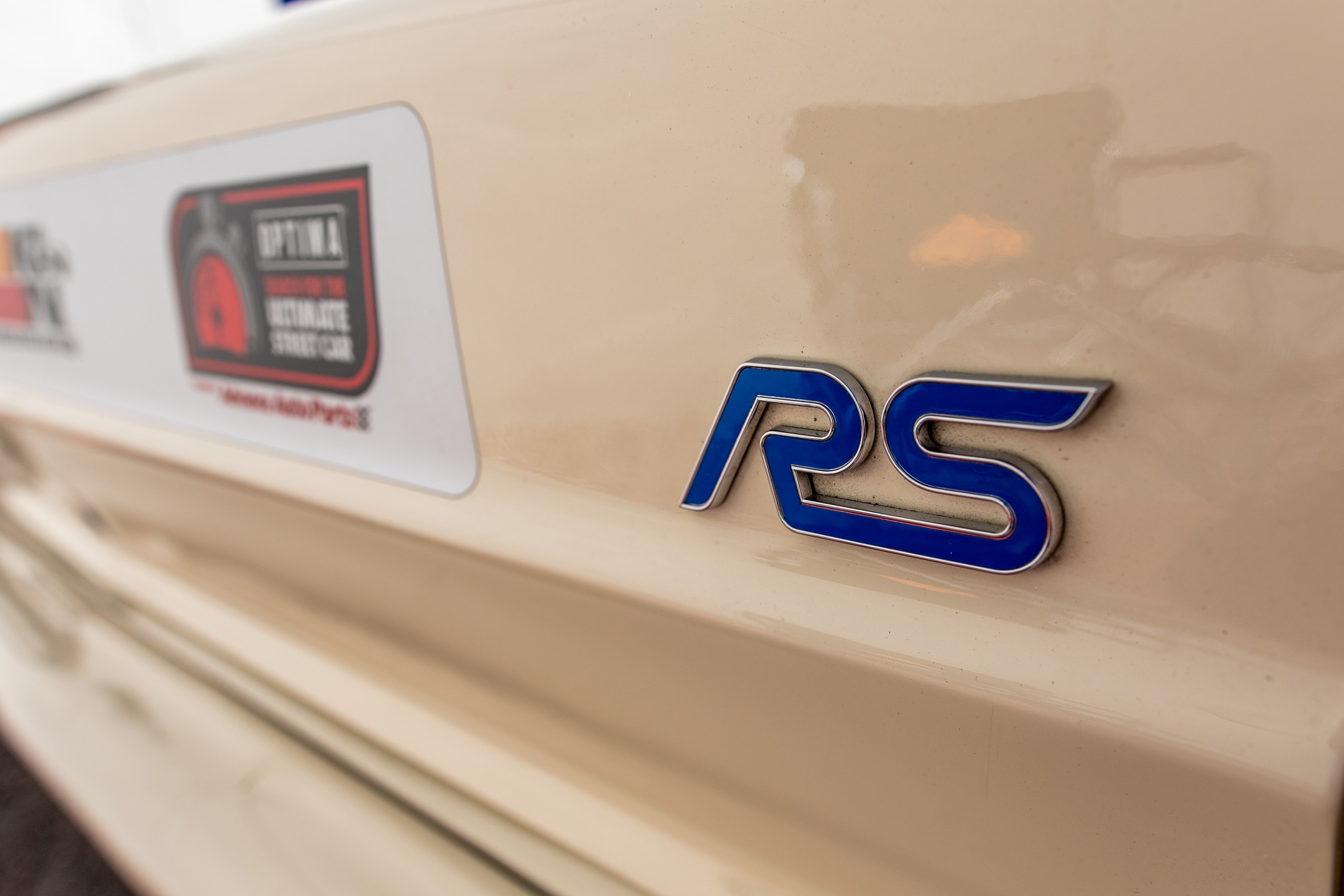John McKissack has always enjoyed the intermediate-sized muscle cars of the ’60s and ’70s. After a Ford Torino 500, his first car, he set his sights on the Ford Fairlane. This particular example has ridden a rollercoaster of a life. As it sits now, it’s a well-rounded racing car that sees plenty of track time. Not that its life is much more comfortable, but traveling the country on the Optima Ultimate Street Car Challenge circuit and making quick work of lighter, newer cars sounds almost relaxing after its rough beginning.
A Rocky Start
McKissack initially bought this ’66 Fairlane 500XL, complete with leather, air-conditioning, and bucket seats, for a mere $1,500 in the late-’90s. Despite its faded exterior, it still caught the eye of a thief and was snatched from McKissack’s driveway shortly after he first rolled it in. Once McKissack recovered his cherished new toy, he began dressing it up for a very special occasion. Soon thereafter, he tied a few cans to the bumper so he could roll away from his wedding in style.
The Fairlane was never meant to be a casual cruiser, though, and after the honeymoon, McKissack started shaping the Fairlane into a focused track car. When the original motor went south, he stuck a crate Windsor in its place. The newfound 430 horsepower required some modifications in the suspension department, so he fitted a set of Spec RCD-tuned Bilstein shocks, as well as Mike Maier’s subframes and forward-stack leaf springs.
With the right amount of power and poise, McKissack made a name for himself during his weekends with the NorCal Shelby Automotive Club. Outrunning Corvettes and M3s at Sonoma Raceway, Laguna Seca, and Thunderhill raised a few eyebrows — including his own. He was pleased with the performance but knew the Fairlane could be a much quicker car if he sorted the suspension out properly.
In search of better composure and poise, he consulted the wise Mike Maier, who provided McKissack with a MOD1 front clip. This consists of JRi shocks, Hyperco springs, billet aluminum shock top-mounts, and tubular upper and lower control arms. A Shelby Drop kit drops the upper arms down one inch and back 1/8-inch. Those are the only pickup points that were changed from the factory location.
The Fairlane had straight-line speed and a robust front end, but the 430 horsepower available easily spun the rears and made exiting corners a chore at times. He again turned to Maier — this time for a Panhard bar. With this addition, “everything came together,” McKissack rejoiced. “It started rotating more easily, and all of a sudden, it felt like a much smaller car.”
“Honestly, before the Panhard bar, it was a total boat,” McKissack laughs. “Seeing what that changed, I wanted to see what sway bars would do. A 1 3/8-inch bar in front and a 5/8-inch bar in the rear gave it the sort of turn-in I was after,” he says.
Considering how the car was still sporting leaf springs and 275-section tires, it made good use of the grunt. It was a strong package, which helped him stand out at local track days, but McKissack’s urge to prove himself — a trait bred from a lifetime of competitive swimming — pushed him to find a more challenging outlet.
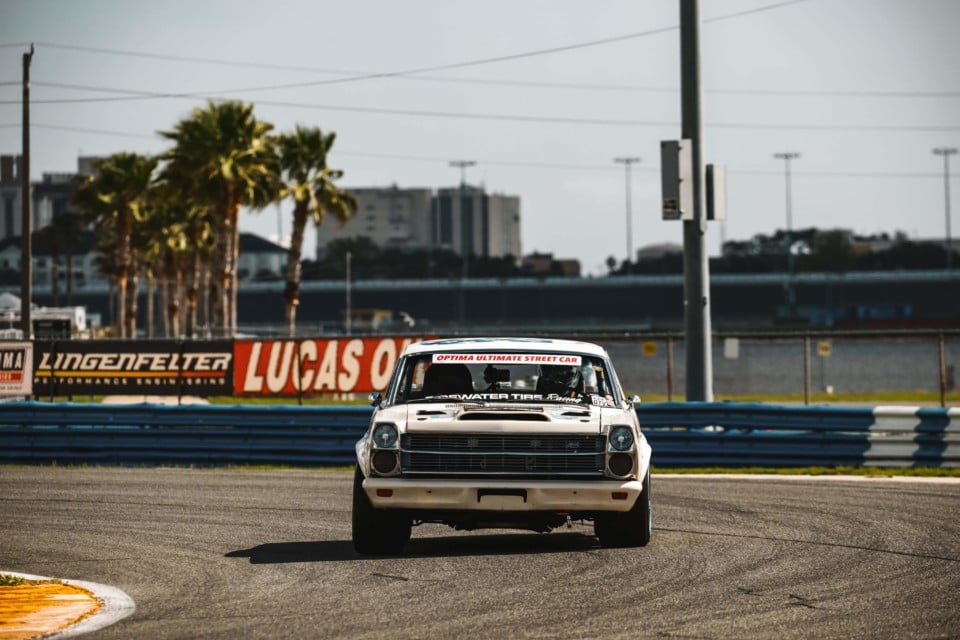
With an enormous footprint and minimal lean, this stiffly-sprung giant handles with the precision of a smaller car.
Searching for Something Greater
Full of confidence, Mckissack wasn’t intimidated by the prospect of running in the Optima Ultimate Street Car Challenge. He’d witnessed an OUSCC event at Laguna Seca, fell in love with the level of competition, and tried it himself the following year at Thunderhill. Running on a set of tires his friend lent him, he finished in the Top 5 in the Street Car class, but its shortcomings were apparent.
While the Fairlane performed well, the stripped interior and lack of amenities didn’t impress the Design & Engineering judges much. A winning car in the OUSCC has to be half-show car and half-race car, and the stripped interior could never be called presentable. To give his Fairlane the sumptuous sort of insides the judges enjoy, he replaced most of the interior, polished every chrome component, and doused the exterior in a coat of ’84 Mustang White.
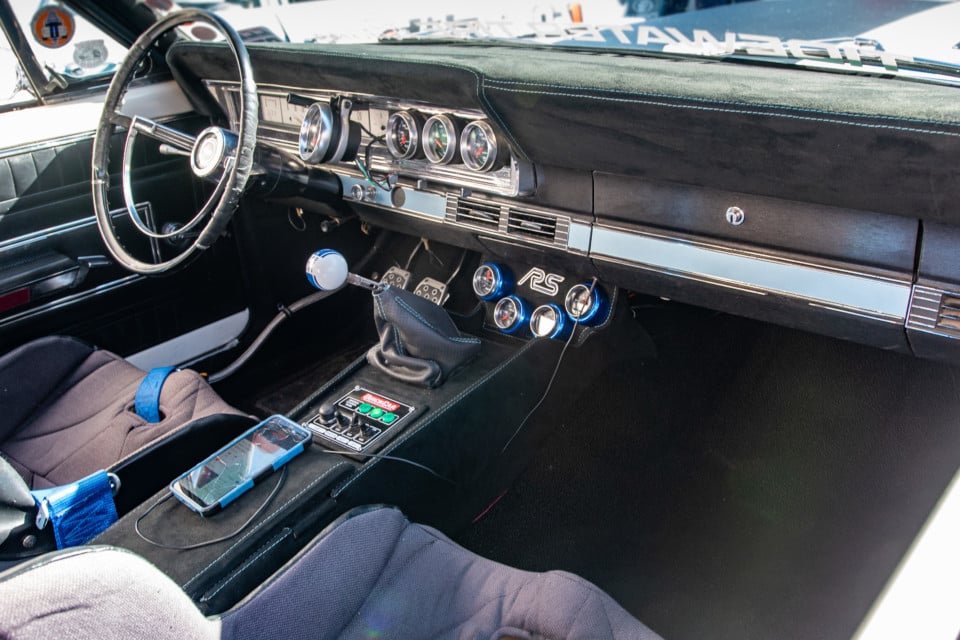
Though he gets flak for retaining it, the original wheel is one of McKissack’s favorite parts of the cabin.
Fortunately, this big boat was well-upholstered from the factory, so the addition of a pair of Kirkeyaluminum racing seats, a half-cage, a few badges from a Focus RS, an assortment of Autometer gauges, and an electric-blue theme throughout gave the cabin enough pizzazz to impress.
Of course, replacing the interior meant adding weight back to the heavyset Fairlane. Getting the Fairlane to rotate nicely on the autocross requires trimming as much heft as possible. To keep it around the target weight of 3,280 pounds, McKissack called on Crites Restoration Products to replace almost all of the bodywork with fiberglass panels. In fact, the only remaining steel portions are the cowl, the roof, and the quarter panels. Even the bumper brackets are fiberglass!
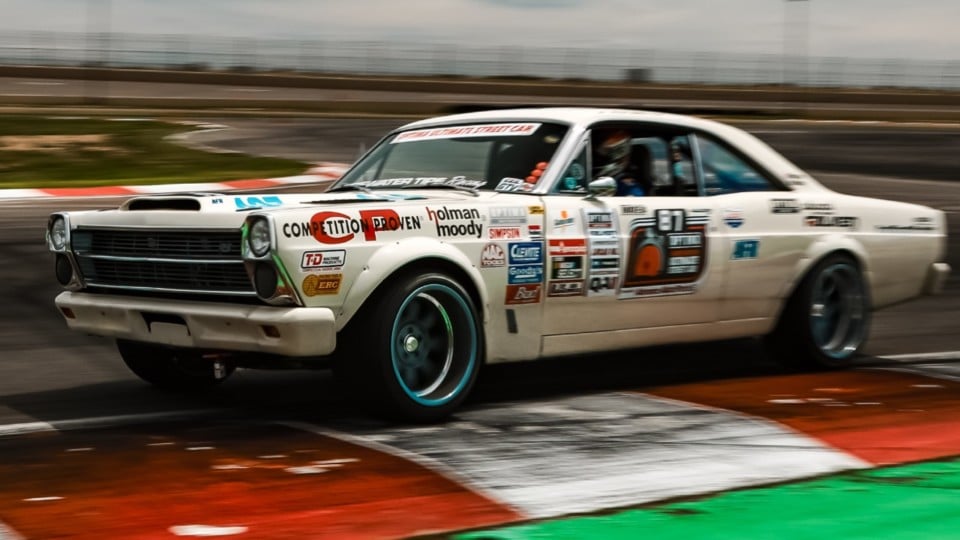
The Holman-Moody livery, nearly identical to the original NASCAR team’s, is another nod to the Fairlane’s racing success.
Never Enough Power
All was going smoothly until the following year when, while competing at the Optima event at Thunderhill Raceway Park, he missed a shift and broke a connecting rod. Once again, he was in search of plentiful and usable horsepower. To achieve the right blend of a progressive torque curve, response, and outright grunt, McKissack went with a DartSportsman 427 block, then stuffed it full with the best goodies available.
Eventually, McKissack plans to equip the 427 with Holley EFI to run E85.
To beef up the rotating assembly, McKissack opted for Mahle pistons, a SCAT crank, and SCAT rods. With the resulting 13:1 compression, the motor responds very briskly for something so big. A Holley 750 carburetor meters out the fuel, and the Canton nine-quart pan — optimized for road racing — helps keep the lump lubricated in long, neck-wrenching corners.
Up top, the AFR Renegade SBF 220 heads and a custom COMP cam give him the sort of top-end power not associated with such a large motor. With free-flowing Performance Ford exhaust and an Edelbrock Victor Jr. manifold, it makes a wonderful engine note, too. But it’s the stump-pulling power that sets it apart. Even weighing quite a bit, its 650 horsepower and 511 lb-ft of torque are enough to hit 160 miles per hour along Daytona’s banking.
Retrofitting the Suspension
As time went on, the 650 horsepower proved more than the Fairlane’s rearend could handle. McKissack called on Maier for the second stage of suspension modifications. The Maier MOD2 cantilever suspension is the component drawing the most attention at the car meet, and it also provides articulation you’d want from a track-oriented car.
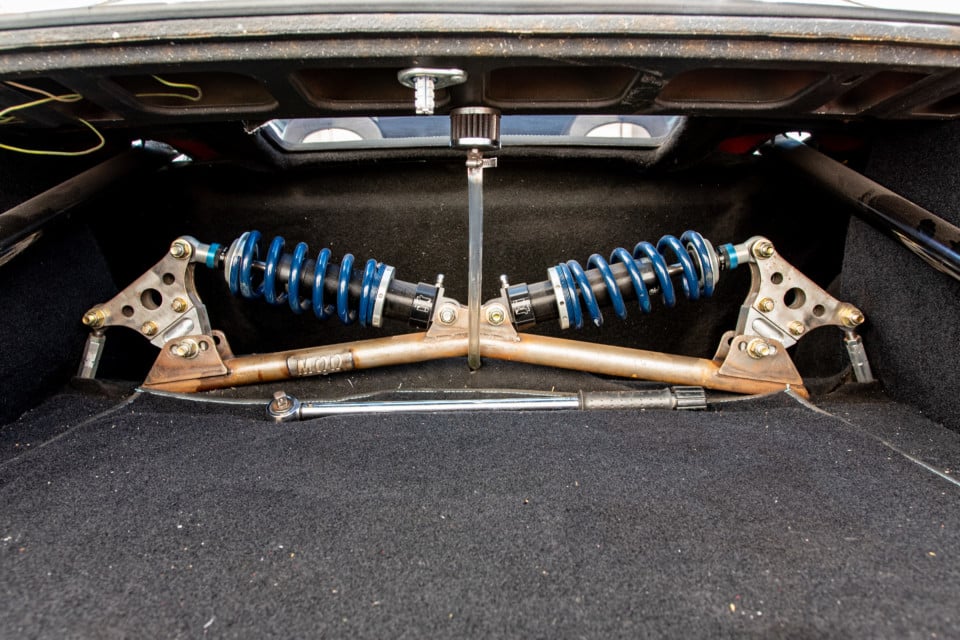
This cantilever suspension allows for McKissack to run 315-section tires in the rear.
The cantilever rear suspension uses a nine-inch torque arm, making it possible to run without a swaybar if necessary. It also comes with JRI single-adjustable shocks, Delrin strut rods, adjustable-length aluminum lower control arms, and subframe connectors.
This setup allows McKissack to change the ride height by adjusting the rods between the rocker and axle without sacrificing coilover travel. It also makes a world of difference when trying to administer the 650 horsepower. It also offers the feedback and support he needs when playing at the edge of adhesion. Greater communication between car and driver, improved driver confidence, and more progressive breakaways were the aims in developing this suspension setup.
As Wide a Footprint as Any
The 427’s power courses through a TKO600 dogbox, back through a Speedway Engineering 9-inch floater rearend with a 3.89 Torsen differential, through the axles, and finally into the 18×12-inch Team III ET wheels wrapped in 315-section Falken RT615K+ tires. With footprints that size, turning power into efficient propulsion is possible — even easy. “After the cantilever suspension and torque arm were added, I could put the power down in hairpins without any worry,” he elaborates.
Though it’s not too common with cars of this type, McKissack decided to run a square tire setup. As anyone would imagine, trying to turn that wide tire unassisted would require Popeye’s forearms, so McKissack installed a KRC power steering unit with a Jordanson box converted to a Saginaw-style — which was one of the best modifications he made. “It was something I probably should’ve done 20 years ago,” he chuckles.
Under those wheels, Mckissack installed a set of Wilwood brakes to help bring the heavyweight to a halt. Up front sit six-piston calipers and 13-inch rotors, fed by brake ducts which draw air from the openings once housing the lower headlights. In the rear sit four-piston calipers with an 11inch rotors. Though the package worked well from the start, he eventually replaced the rear pistons for smaller items to alleviate some of the wheel hop. As it is now, he can out-brake lighter cars with confidence.
A Busy Future
There’s not much more tire and brake one can fit in the confines of the Fairlane’s body, but McKissack is still trying to find some. Soon, he plans to widen the body and fit 335-section RT615K+ tires at all four corners. Since he anticipates seeing approximately 725 horsepower at the rear wheels with the addition of a tailored cam and electronic fuel injection, he’s going to need as wide a footprint as he can find.
It still has enough punch to outrun some powerful cars around Laguna Seca:
That isn’t the only way the shape of the car will change. As aerodynamics are a critical part of the game these days, he’s outlined a long list of additions to help push the Fairlane into the pavement and run coolly. Among them are a diffuser, rear wing, a flat underbody, side skirts, and a front splitter. Where cooling can be improved, he plans to add a set of NACA ducts, and he’ll relieve air pressure in the cabin with polycarbonate in the place of the rear window and quarter glass. Indeed, there aren’t many areas he hasn’t inspected and improved.
If the lengthy Fairlane can move through the air cleanly and confidently, McKissack should be able to tick off a few more boxes on his bucket list. The Silver State Challenge, the Virginia City Hillclimb, and a few passes at Bonneville — all high-speed events, which require a car to have a good relationship with the air that passes around it. More aero grip and diminished drag might also help him achieve his aim of a podium at OUSCC — he’s been knocking on the door for quite some time.
He’s nearing his sixth decade, but McKissack hasn’t shown any signs of slowing. With so much of his life spent competing — in the pool or on the track — it’s not like he can give up on those life-affirming thrills, now. Whatever comes from the next stage of this car’s colorful life, it demonstrates that with enough motivation, the right parts, and the right people, a Fairlane’s size does not keep it from fighting at the sharp end of the pack.

